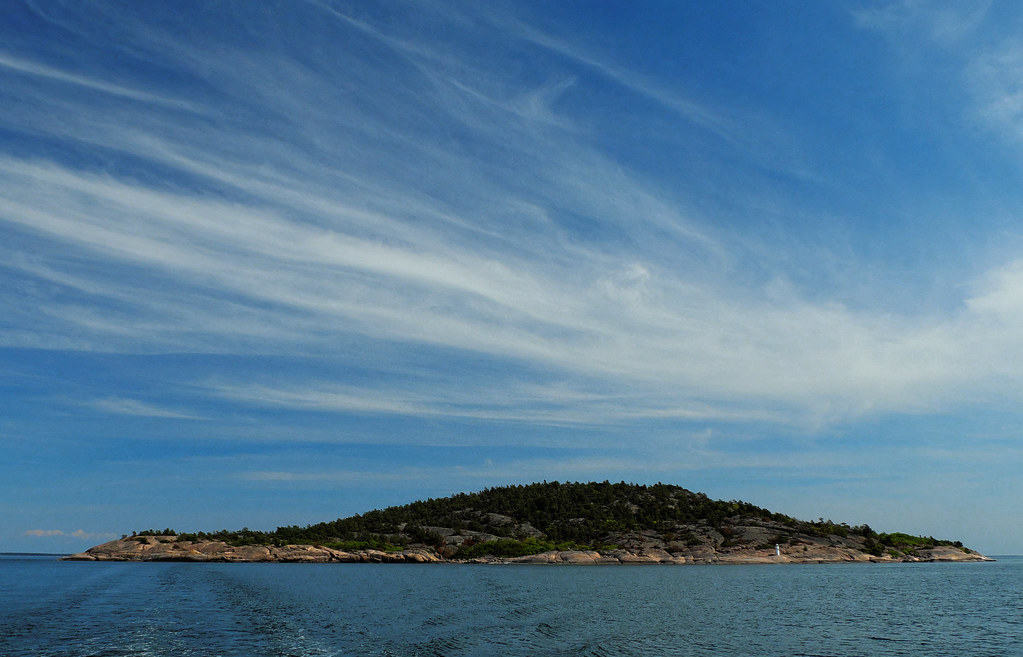Blå Jungfrun plays an important role in Swedish folklore, as for centuries it’s been connected to witchcraft, devil worship and is said to be a home to female supernatural beings.
The Blue Maiden is a small, granite island rising 86 meters above the waters of Baltic Sea. It is situated in the Kalmar Strait between Småland and Öland. Bio-diverse and truly unique, it’s been a national park since 1926.

The island also goes by another cursed name – Blåkulla. In the past, those who were sailing close to its shores, avoided using the cursed name when referring to the island. They believed that storms would brew up immediately if they used it. Due to this the island became known as Blå Jungfrun instead.

As the island is uninhibited (at least by the regular mortals) and there’s no sweet water or electricity present, visiting is limited to short, day visits only during summertime. Visitors can’t stay overnight either, besides one or two organised trips per year.

Blå Jungfrun is viewed as an evil and magical place full of supernatural powers. According to popular belief witches gather here every Ostara (a pagan beginning of the year) to worship devil himself. This is a part of the tradition among the local folk. In Oskarshamn, the closest town, around Easter time you can even see the signs to watch out for low flying witches ; )

Archaeological excavations done in 2014 brought evidence that the island was used for ritual purposes for the last 9,000 years. People who traveled to the island might have practiced various rituals inside the two caves. First one could serve as an altar where offerings could have been made to deities. While another cave has an area that could have been used like a theater or stage.

But with no doubt Blå Jungfrun’s magical power relates to the Trojeborg Stenlabyrinten, an ancient stone labyrinth, that lies on the southern side of the island.

According to the locals, anyone who removes the stones from this labyrinth will be cursed with a lifetime of bad luck until they will bring them back. Obviously the stones are illegal to take from the island because of its national park status. But apparently there’s a lot of truth behind this superstition. And let me tell you – it IS a thing among the locals.
In fact the town of Oskarshamn yearly receives stolen stones from former Blå Jungfrun visitors, often along with letters describing misfortunes and disasters that happened to them after removing the stones. In 2004 over 160 such stones were publicly brought back to the island on a ferry from Oskarshamn.
You can see more photos from this location in my Flickr album.

